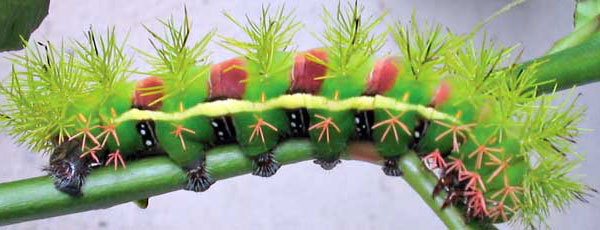Climate Change and Caterpillars in Ecuador
- Quito, Ecuador
- Volunteer Vacations

| Contact provider for price | 11 Days | July |
| Simple accommodations | Exertion level: 3 | |
| Operator: Earthwatch Institute | 12 people max | |
Loading map, please wait...
Locations visited/nearby
Yanayacu Biological Station , Andes , Amazon , cloud forest , caterpillars , laboratory , earthwatch , Hunting for Caterpillars in the Andes , Ecuador
0 testimonials about this trip.
1 testimonial about the provider, Earthwatch Institute:
-
Reviewer: L. Reifschneider
located in
St. Louis,
MO
USA
Elephant conservation is what drives my travel destinations. However, I always come home counting the blessings of new friends and an understanding of a culture and way of life I possibly would otherwise have never been introduced to. Through the Earthwatch projects I participate in, I am learning just how big and wonderful this world is.
Itinerary
On the ExpeditionExplore the fascinating world of caterpillars to see how they protect themselves and respond to changes in their habitats.
You'll work with Principal Investigator Dr. Lee Dyer and a team of researchers to find and collect caterpillars and their host plants. In the open-air laboratory, you'll help raise caterpillars at all stages of their life cycles and record their relationships with plants and parasites. When you're not unrolling leaves in search of telltale caterpillar signs or labeling specimens in the lab, you can enjoy striking views of the cloud-covered Andes, scan the trees in the neighboring Antisana Reserve for some of Ecuador's over 1,550 bird species, or chat with other researchers staying at the station.
Meals and Accommodations
The Yanayacu Biological Station serves as a base for researchers studying the many plants, birds, spiders, caterpillars and other unique species of the cloud forest. Ecuadorian staff members will prepare typical Latin American fare for you at the station, where you will share a basic room with one to five other team members. The station offers hot water showers, flush toilets, hydroelectric power and a back-up generator, and a computer room with limited internet access.
About the Research Area
Biological diversity is very high in Ecuador. In fact, due to the variety of its ecosystems and species, it is one of the few countries on Earth labeled “megadiverse,” with 320 known species of mammals, 350 species of reptiles, over 375 species of amphibians, more than 1,550 species of birds, and between 22,000 and 25,000 species of plants. Insect diversity is also extremely high but not well studied; butterfly inventories in specific regions of Ecuador have revealed remarkable species diversity.
Yanayacu Biological Station is on the eastern slope of the Andes at about 2,200 meters above sea level, in the Napo Province near the town of Cosanga. Large tracts of good forest here (each 1,000 hectares) and a lot of secondary growth along roadsides make perfect conditions for collecting caterpillars, especially because huge Yanayacu does not have extreme inclines. Behind the private reserve is the Antisana Reserve, an immense wildlife refuge that goes all the way over the Paramo.
More information from Earthwatch Institute:
- View trip on provider's website
earthwatch.org/expeditions/dyer_ecuador.html… - Company profile, experience, and history
- View all of their trips
- Email this trip page to a friend
-



Comments from Facebook